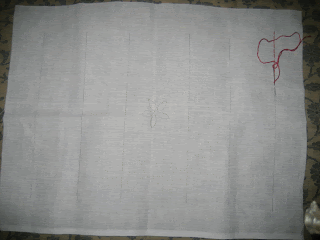Here is a crisp video that shows you how you can mount the fabric on the embroidery frame. It is easy to view the crisp video. You may watch this video a couple of times to learn and treat the following instructions as reference later.
Note that for the initial stitches that you will learn, you may not use the frame, as the fabric that you use will be quite small in size. But it is always advisable to use frames as the stitches will be neat and you will not pucker the fabric accidentally. I suggest that you use frame definitely for satin stitch. For hemming, we cannot use the frame as hemming is done along the edges by folding the fabric.
Note:
You may or may not use the frame for learning the stitches. I suggest you to use the frame compulsorily for satin stitch though!!
Any way I am giving the step-by-step instructions below.
· Slightly loosen the screw so that the two parts of the frame come apart loosely.
· Place the full ring (without the screw) on a clean floor/table.
· Place the fabric on this frame with the portion to be embroidered almost at the centre.
· Now place the ring with the screw over the fabric to fit the bottom ring.
· Gently bring both the rings together with the fabric in the middle.
· Slightly tighten the screw to bring the two rings close together leaving a little space for the fabric to move.
· Stretch the fabric outside the frame so that the fabric is taught.
· Keep tightening the screw a bit and stretching the fabric little by little alternately so that the fabric is taught.
· Now tighten the screw till you feel that the fabric will not loosen from the frame.








